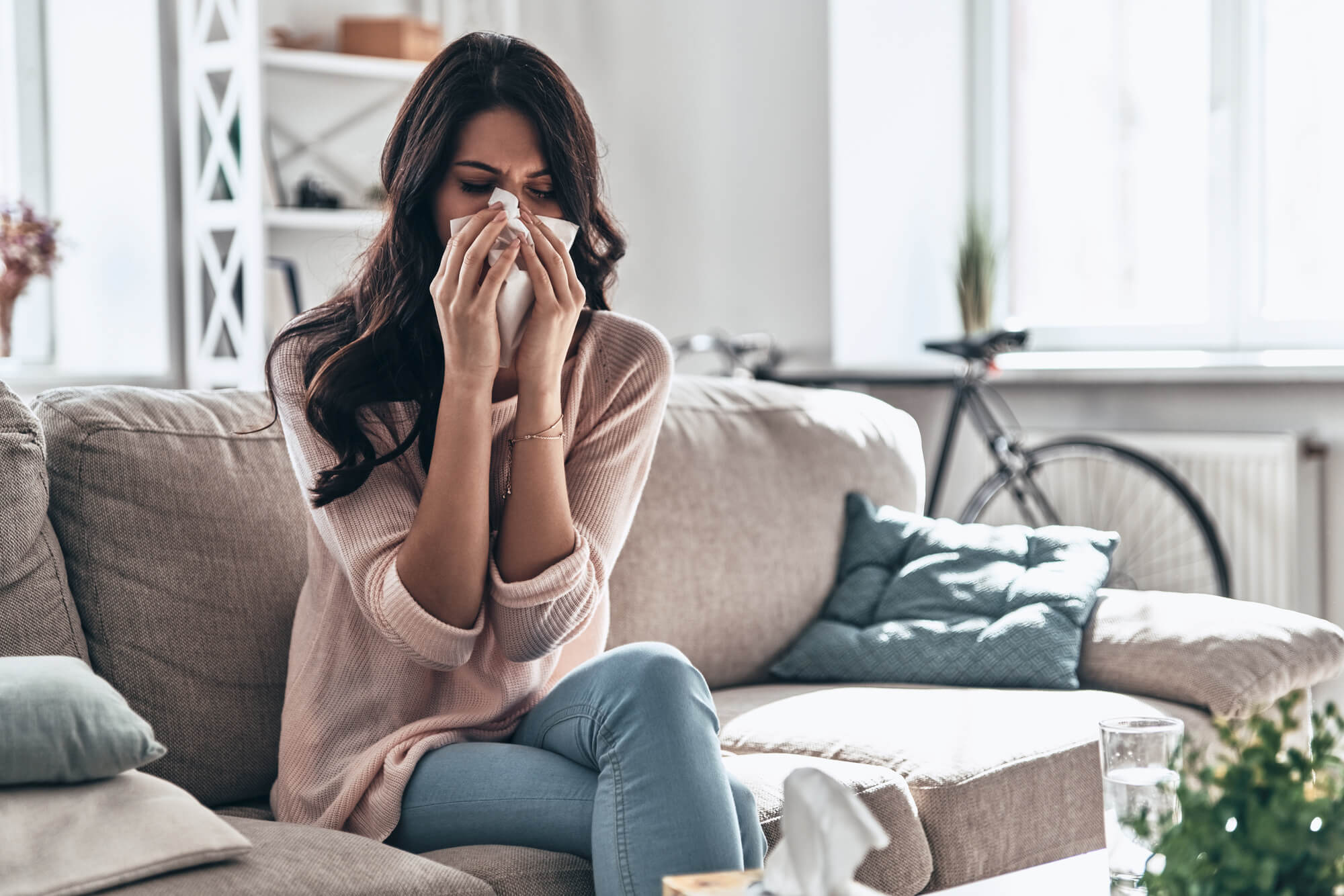
Many homes may unknowingly harbor indoor allergens that trigger uncomfortable symptoms. Imagine waking up with a stuffy nose, itchy eyes, and persistent sneezing. Despite your best efforts, these allergy symptoms linger.
These inconveniences can make your home feel less like a sanctuary and more like an allergy battleground. A home makeover can address this common problem, creating a healthier living space. It involves making thoughtful changes to minimize allergen exposure.
For instance, if you’re allergic to dust mites, it’s probably best to ditch those regular sheets and upgrade to allergen-proof ones. And why settle for carpets when you can embrace the elegance of hardwood or tile flooring? Trust me, your home will be grateful for the makeover, as will your sinuses.
Meanwhile, if you want to take your indoor air quality to the next level, investing in air purifiers is like giving your lungs a VIP pass to breathe in the purest, freshest air. If you’re ready to say goodbye to these worries, browse suitable products like Molekule. Don’t forget to read a Molekule Air Purifier review to help you make an informed decision.
Here are some helpful tips and tricks you can use to create a home makeover that will provide relief from allergies:
1. The Living Room Makeover
Having the right flooring and implementing effective dust control measures is crucial for alleviating allergies. Allergens such as dust, pollen, and pet dander frequently accumulate on carpets and rugs. Hence, they can make it challenging to maintain an allergen-free indoor environment.
Choosing allergen-resistant flooring and washable carpets is essential for reducing allergen buildup and maintaining a clean and healthy living area. Consider these tips:
- Instead of carpeting, opt for hard flooring options such as hardwood, tile, or laminate. Carpets trap allergens, which can pose a challenge when trying to eliminate them.
- Use washable rugs with low piles if you want cushioning in certain areas. Regularly washing these rugs can remove allergens and improve air quality.
- Use a vacuum cleaner with a high-efficiency particulate air (HEPA) filter to remove dust from hard floors and rugs. It can do a good job of catching allergens.
Microfiber towels that trap allergens are excellent for cleaning surfaces. Making updates to your cleaning routine can have a significant impact.
2. Allergen-Free Bedrooms
The bedroom is where you spend most of your day, and it should be a sanctuary for relaxation, especially for allergy sufferers. Remember these suggestions:
- Invest in Hypoallergenic Bedding: Use hypoallergenic mattress and pillow covers to protect against dust mites and allergens. Wash bedding in hot water weekly to remove allergen buildup.
- Remove Clutter: Minimize clutter in the bedroom as it collects dust and allergens. Choose easy-to-clean furniture and avoid heavy drapes that trap allergens.
These simple changes can lead to more restful nights and fewer allergy symptoms.
3. Air Quality
Indoor air quality is critical for allergy relief. Allergens in the air can trigger symptoms and cause respiratory problems. On the other hand, did you know that the right indoor humidity level facilitates allergy relief?
High humidity encourages mold growth, which is a common allergen trigger. Meanwhile, low humidity can cause dryness and irritation. These tips can reduce airborne allergens and ensure a healthier indoor environment:
- Invest in high-quality HEPA air purifiers, like Molekule, to capture and remove airborne allergens.
- Regularly change heating, ventilation, and air-conditioning (HVAC) filters every two to three months to avoid allergen recirculation throughout the home.
- Use dehumidifiers to maintain your home’s humidity below 50%. It’ll help keep allergens away.
- Preventing moisture accumulation and potential mold growth requires addressing any leaks in the home.
Adding plants can improve air quality. You can look for aloe vera and spider plants. They can purify the air by filtering out toxins and allergens.
4. Designate Pet Areas

Managing allergens from pet hair is crucial in pet-owning households. Creating allergen-free zones in the home, such as bedrooms and living rooms, allows allergy sufferers to retreat.
Here are some recommendations if you have pets and suffer from allergies:
- Establish Pet-Free Zones: Minimizing allergen exposure requires designating specific home areas as pet-free zones, like bedrooms or living rooms.
- Regular Pet Grooming: Groom and bathe pets regularly to reduce shedding and dander, which are common allergen sources.
The first step toward better living may be as simple as giving your pets their designated space.
5. Furnishings
The choice of furnishings can significantly affect the allergen levels in your home. Smooth furniture surfaces can prevent dust and allergens accumulation. Meanwhile, avoiding harsh chemicals in cleaning products protects allergy sufferers from irritants.
Take note of these tips:
- Select furniture with easy-to-clean surfaces and avoid pieces that collect dust.
- Use non-toxic cleaning products for furniture and upholstery to avoid irritating allergens.
You can create a more comfortable living space by making informed decisions when purchasing furniture and cleaning products.
Conclusion
These home improvement tips and tricks can help allergy sufferers create a safe environment. A few simple changes can promote better health and well-being. Reducing allergens can improve the quality of life for allergy sufferers, allowing them to relax in their homes.
Dr. Laura Thompson
Related posts
Stay connected
Today's pick
- Things to Remember While Designing Your Custom Modular Kitchen in GurgaonGurgaon now known as Gurugram is the second largest city in the state of Haryana and is a reflectiossn of an ideal modern city with futuristic goals. Witnessing rapid urbanization, it has also emerged as a hub for contemporary homes, with homeowners seeking innovative and... The post Things to Remember While Designing Your Custom Modular […]

